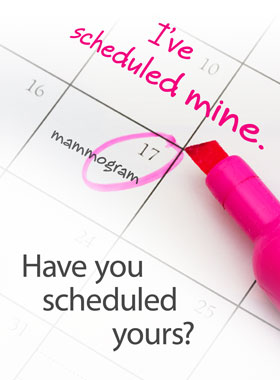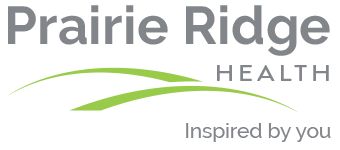The Importance of Mammograms - A True Life Story as Told by Darlene Marks
They both agreed there was a lump and she needed to have a mammogram. Following the mammogram things moved along quickly. With the assistance of Cathy Butterbrodt, RNC, CBPN-I; ONC,PRH Cancer Navigator and Breast Health Specialist, Darlene received information and the support she needed to be connected with a surgeon and make decisions regarding next steps.
In order to increase her support network, she chose to share her situation with her immediate family and one close friend who was a breast cancer survivor for 20 years. “It was a big decision,” explained Darlene, who was faced with the choice of having a lumpectomy or a mastectomy. “I wanted to keep things private and deal with this myself.”

“After much talking with Cathy, reading all of the literature she gave me, and what I know from my medical background, I chose to have a mastectomy,” she said. “I made my decision on my own with the support of my friend who survived breast cancer and the thought of my friend who passed away from breast cancer just four years earlier.” Throughout the process, Darlene tried to keep humor in the mix to offset the drama she was facing.
“I also regularly attended the cancer support groups that Cathy offers.” Just three years later, Darlene now wears a prosthesis and takes tamoxifen. She performs routine self-checks and has a mammogram every year. She also enjoys spending time with her family and friends. “I was very fortunate with the type of cancer I had and when it was discovered that I did not need to have radiation or chemotherapy after surgery,” she said.
“You think about your future and your family. The sooner you take care of yourself, the more time you can spend with them. The sooner you find it, the sooner it is treated, and the better the outcome.”
“With all the different questions and debates out there about having a mammogram it can be very confusing to women,” said Butterbrodt. “The most important thing is to do your breast exam at the same time every month, typically a week after your menses. Talk to your doctor about your risk factors and make an educated decision as to when to start having your mammogram, how often and when to stop.”
Butterbrodt adds that most women should have a mammogram with no defined age limit, as there is no true evidence stating that it would be better to wait every two years to have mammograms. “This should be a shared decision making process with your doctor,” said Butterbrodt. “If breast cancer is detected in the earliest stages the treatment will typically not be as aggressive and surgery can be at a minimum. It’s also important to note that only 5-10% of breast cancers have a heredity factor, which leaves 90-95% chance of getting breast cancer due to gender and other risk factors.”
According to the U.S. Preventive Services Task Force, women should start regular mammograms at 50, and women in their 40s should make an individual decision about whether or not to screen. The American Cancer Society stresses that screening should be offered starting at age 40, and outright recommends starting at 45. And the National Comprehensive Cancer Network, an alliance of major cancer centers, recommends starting regular mammograms at age 40.
What is Darlene’s advice to women? “Have an annual mammogram. Don’t put it off a month or two. Then follow through with regular self-checks. And if you have never had a mammogram, treat yourself for your birthday. You deserve it!”
TO SCHEDULE YOUR MAMMOGRAM AT COLUMBUS COMMUNITY HOSPITAL CALL 920-623-6466. NO PHYSICIAN REFERRAL IS NEEDED.

